Long-term revenue and participation declines in U.S. groundfish fleets suggests risk due to climate change may be high and heterogeneous
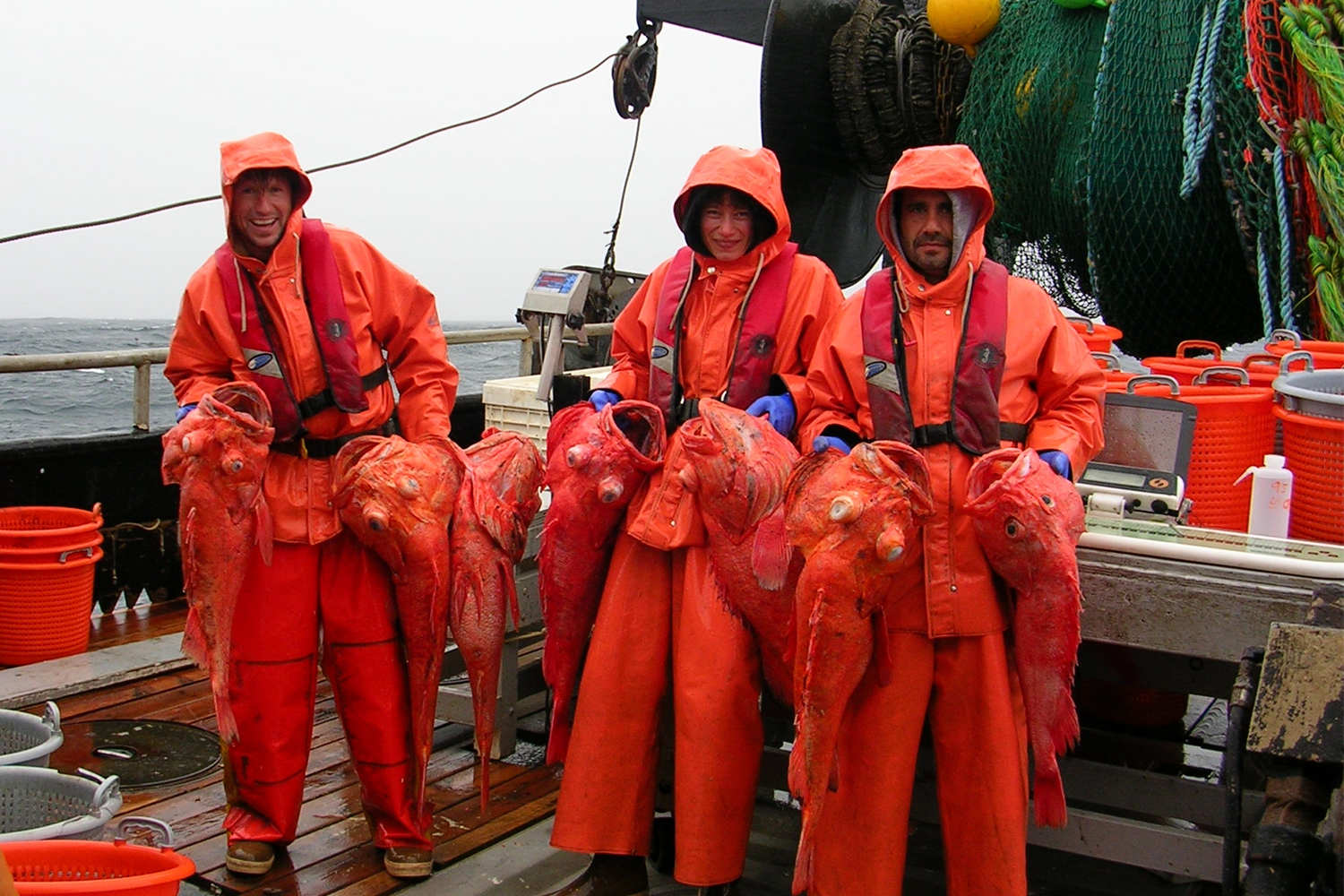
In much of Europe and North America, groundfish fishing fleets that use bottom trawl gear to target bottom species have formed the backbone of fishing communities for decades to centuries. Many of the most well-developed future projections of the impacts of climate change for fisheries are rooted in predictions of declining abundance of groundfish species, which tend to be characterized by high-quality, fishery-independent data, strongly influenced by environmental forcing, and prone to overfishing due to their life-history characteristics.
Surprisingly, however, there are relatively few studies that explicitly connect climate change to coupled social-ecological risk for groundfish fishing fleets. On the U.S. West Coast, this gap in understanding is a crucial one, as the groundfish fishery in this region is a cornerstone of the commercial fishing industry and economies of entire fishing communities. Groundfish are caught by bottom trawl off of the coasts of California, Oregon, and Washington, including catch by some vessels participating in state-managed bottom trawl fisheries that capture federally managed groundfish incidentally.
The confluence of long-term declines in revenue and participation along with increased geographic consolidation suggests that the risk due to climate change for U.S. West Coast groundfish fleets may be high and heterogeneous, yet neither these risks nor regional variability in the potential for these fleets to mitigate risk has been rigorously explored.
This article – summarized from the original publication (Samhouri J.F. et al. 2024. Stay or go? Geographic variation in risks due to climate change for fishing fleets that adapt in-place or adapt on-the-move. PLOS Clim 3(2): e0000285) – reports on a study that developed a coupled social-ecological approach to assess the risk posed to fishing fleets by climate change, applying it to a case study of groundfish fleets that are a cornerstone of fisheries along the U.S. West Coast.
We first evaluated the risk if fleets change target species while continuing to fish in current fishing grounds (the adapt in-place assessment). Then we assessed the risk if fleets shift fishing grounds while targeting current species (the adapt on-the-move assessment). We defined each groundfish fleet as the collection of vessels landing groundfish caught using bottom trawl gear and delivered to buyers in the same port group. We noted that this definition of a groundfish fleet is inclusive of vessels with federal permits for the fishery and vessels participating in state-managed bottom trawl fisheries that capture federally-managed groundfish incidentally. For detailed information on the study data and methodology, refer to the original publication.
Climate risk assessments
The translation of global-to-local projected impacts of climate change can facilitate strategic planning that helps resource-dependent communities and industries take a proactive role in their futures. One form this translation can take is climate risk assessments that are performed at scales relevant to individuals, communities, and decision-makers. Such steps increase the reliability and relevance of information by representing important social and biophysical processes more accurately and providing user-specific context.
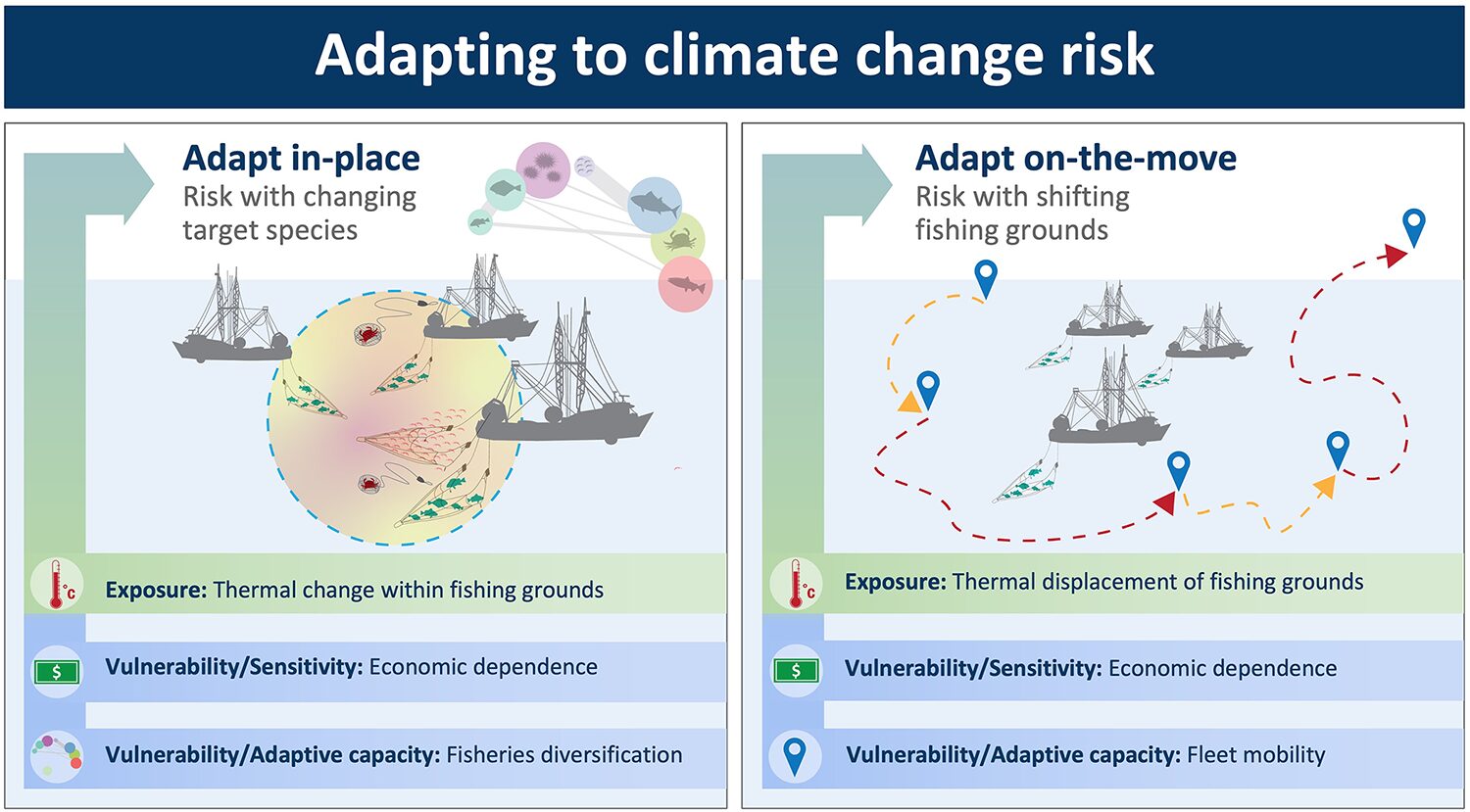
Focusing on the bottom trawl groundfish fishery along the U.S. West Coast, we found that more poleward fleets face greater risk due to climate change because of higher exposure and greater sensitivity in the form of economic dependence on groundfish. Specifically, we showed that poleward risk was greater if fleets rely on existing groundfish fishing grounds, which necessitates diversifying to other species and can come at a cost (e.g., investment in additional permit and gear types), rather than shifting fishing grounds and maintaining current catch composition. This result suggests that an adapt on-the-move strategy will better mitigate risk than an adapt in-place strategy for high-latitude fleets, assuming that the variable costs of fishing (e.g., due to changes in fuel prices and labor wages) relative to ex-vessel revenues remain similar to the present.
Our findings contrast with similar work in other parts of the world, such as Europe, where lower-latitude fleets and fisheries are expected to face greater climate risk. While existing within-fishery flexibility on the U.S. West Coast provides some promise for coping with, reacting to, and adapting to projected impacts of climate change, our analysis highlights how further development of this and other dimensions of adaptive capacity could enhance resilience of these fishing fleets.
Building climate resilience for fishing fleets
Furthermore, the narrower continental shelf available to California fleets has led to smaller fishing footprints (areal extent) and lower projected exposure to expected ocean warming for equatorward groundfish fleets, which also tend to be composed of smaller, less mobile vessels. These trends are a result of the biogeographic context in which each fleet operates, a changed regulatory environment, historical impacts to more equatorward groundfish stocks and various other factors.
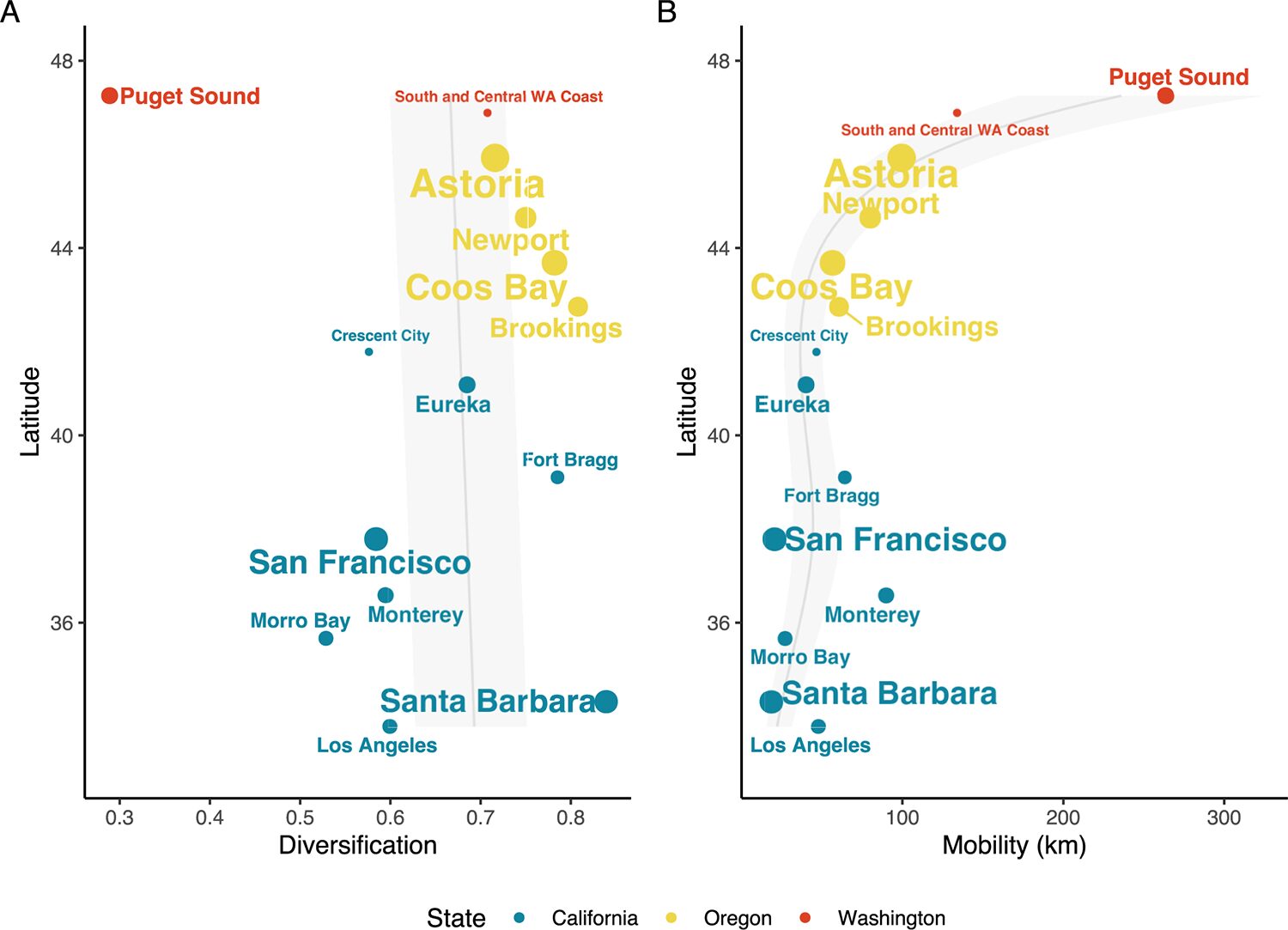
Parsing risk into its constituents (exposure, sensitivity, and adaptive capacity, under two contrasting adaptation strategies) suggests different types of interventions that can be implemented to reduce risk. Communities may have similar risk scores, but contrasting sources of risk, and therefore may respond favorably to customized interventions.
Mitigating risk may require more proactive efforts to improve adaptive capacity, such as fisheries portfolio diversification or enhancing fleet mobility, or to reduce sensitivity through expansion of revenue streams, among other solutions. For example, in California, there are existing precedents for enhancing adaptive capacity for fleets with latent risk (low sensitivity and low adaptive capacity.
In contrast, the suite of interventions for fleets that are potential adapters (because they have higher adaptive capacity and sensitivity) are more likely to focus on a reduction in sensitivity. Livelihood diversification (e.g., through mariculture or tourism activities) can dampen sensitivity while also improving adaptive capacity in-place, whereas improving access to fish for other target species and in new (or previously closed) fishing grounds are more exclusively directed at reducing sensitivity. Finally, there are interventions that could rescale the risk landscape across all fleets, such as recent efforts to create increased market share for groundfish.
Increased consumer demand for a diversity of groundfish could increase profit margins, augment financial safety nets for fishers, and provide an opportunity to take advantage of currently underutilized and abundant stocks. However, the creation of market demand in specific areas requires the resolution of mismatches between locations of fishery landings, seafood processing, and seafood markets (e.g., through accurate mapping of seafood supply chains and rescuing of stranded capital). In addition, market demand interventions may exacerbate ecological risk if they incentivize localized depletion of stocks to meet growing local demand.
Fisheries in Focus: How the mystery of the great eastern Bering Sea snow crab die-off was solved
Historical contingencies in management, market, and ecological forces provide an important context for evaluating the most useful interventions, regardless of whether risk due to climate change is higher or lower for these fleets. For the bottom trawl groundfish fishery on the U.S. West Coast, revenue has become more concentrated within fewer fleets over the last several decades, a trend that continued throughout the 2011–2019 period we focused on in this study.
Future directions for assessing climate risk in fisheries
Our approach to understanding spatial heterogeneity in climate risk for fishing fleets in general, and on the U.S. West Coast in particular, highlights opportunities for future research. The data and methods we used to estimate exposure, sensitivity, and adaptive capacity, and to combine them into a risk index, deserve further examination. For instance, we found that estimates of exposure based on horizontal displacement of bottom isotherms are highly uncertain. This result underscores the challenge of generating expectations about future ocean conditions and use, and brings into question how other environmental factors that affect species distributions, such as dissolved oxygen, may change and interact with the behavior of fishing fleets.
Another avenue of future research is integrating expectations for other fisheries in the participation networks that are likely to experience climate effects, which will add complexity to estimates of adaptive capacity. There is also the question of how best to identify fishing areas, or footprints, for estimating exposure. Here we identified the primary fishing grounds where the majority of harvested biomass is extracted based on vessel landings by port. Alternative approaches could use metrics such as revenue, fisher days, or could define fishing areas specific to vessel home ports.
There are also alternative approaches for describing sensitivity and adaptive capacity. For example, rather than focus solely on economic dependence on a target species relative to all other commercial fisheries, it would be informative to quantify the economic dependence of fleets on target species relative to all other income streams including those outside of commercial fisheries. Such data are not necessarily widely available, though household survey research in small-scale fisheries provides a template for pursuing this line of inquiry.
Assessments of risk due to climate change can be used to communicate potential impacts to people, regions, or sectors at local scales, and in so doing can provide rationale for medium- to long-term policy decisions intended to improve resilience.
These kinds of data are commonly available from many of the largest-volume, greatest-value fisheries globally. However, given that these data were also available for the relatively small fleets we assessed here, this framework may be viable for smaller-scale fisheries as well, especially with creative approaches to generating information streams (e.g., improving understanding of fishing grounds, economic dependence on target species and mobility via structured surveys and participatory workshops).
Perspectives
The contrasts observed in our study among U.S. West Coast groundfish fleets have explanations ranging from physics to market forces, and contingencies fueled by historical and present-day regulations. They add to evidence from the U.S. that more poleward fishing fleets may be at greater risk due to climate change, in contrast to expectations for greater equatorward risk in other parts of the world, such as Europe.
While the potential for the adapt on-the-move strategy to mitigate greater poleward risk exceeded that for the adapt in-place strategy, our results imply that neither of these within-fisheries flexibility measures are sufficient to disrupt fundamental geographic patterning of risk. Rather, alternative adaptation approaches that build out other attributes of flexibility, including those external to commercial fisheries, and alternative dimensions of adaptive capacity not addressed here, may prove most fruitful for ameliorating latitudinal patterns of climate risk. For example, increased agency for fishers to access new target species entering their fishing grounds, the introduction of greater flexibility to shift fishing permits quickly, and organizational support to develop new markets are all aspects of adaptive capacity that can reduce climate risk.
Evaluations of climate risk and adaptation approaches that capture these other types of issues need not be more complex, but instead can strive for transparency, replicability, and comparability with ours. While the insights presented here are specific to the U.S. West Coast, they suggest that coupled social-ecological risk assessments like this one offer a promising path forward for evaluating climate adaptation options in other regions around the world.
Now that you've reached the end of the article ...
… please consider supporting GSA’s mission to advance responsible seafood practices through education, advocacy and third-party assurances. The Advocate aims to document the evolution of responsible seafood practices and share the expansive knowledge of our vast network of contributors.
By becoming a Global Seafood Alliance member, you’re ensuring that all of the pre-competitive work we do through member benefits, resources and events can continue. Individual membership costs just $50 a year.
Not a GSA member? Join us.
Author
-
Jameal F. Samhouri, Ph.D.
Corresponding author
Conservation Biology Division, Northwest Fisheries Science Center, National Marine Fisheries Service, National Oceanic and Atmospheric Administration, Seattle, Washington, United States of America[118,111,103,46,97,97,111,110,64,105,114,117,111,104,109,97,115,46,108,97,101,109,97,106]
Tagged With
Related Posts
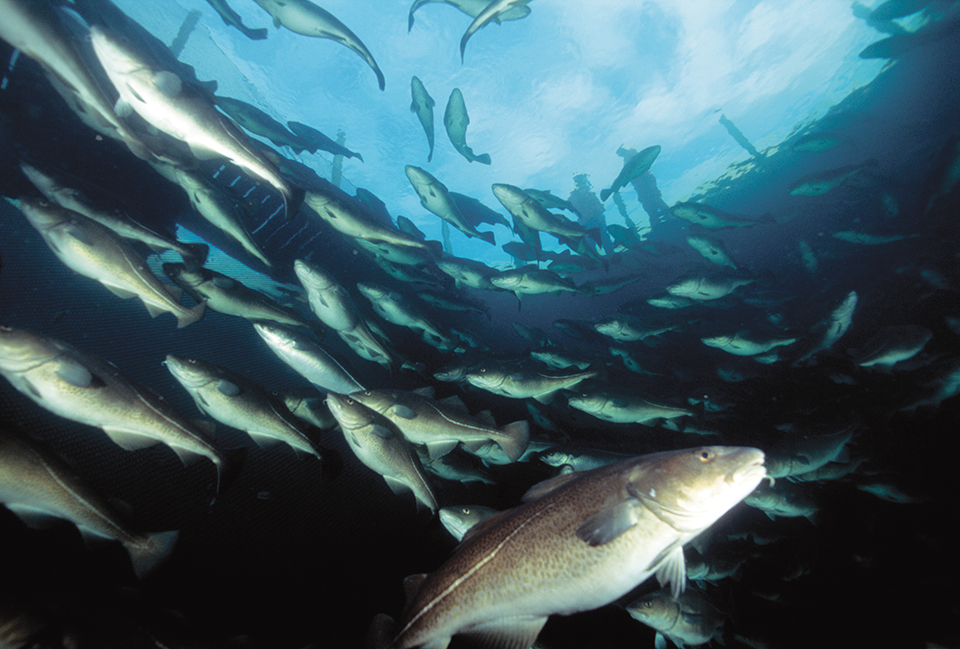
Intelligence
Groundfish aquaculture in Norway
Norway’s groundfish-farming industry can deliver premium-quality products, but can it achieve economic sustainability, as well? Salmon feeding, quality and disease technology can not be fully transferred to cod.
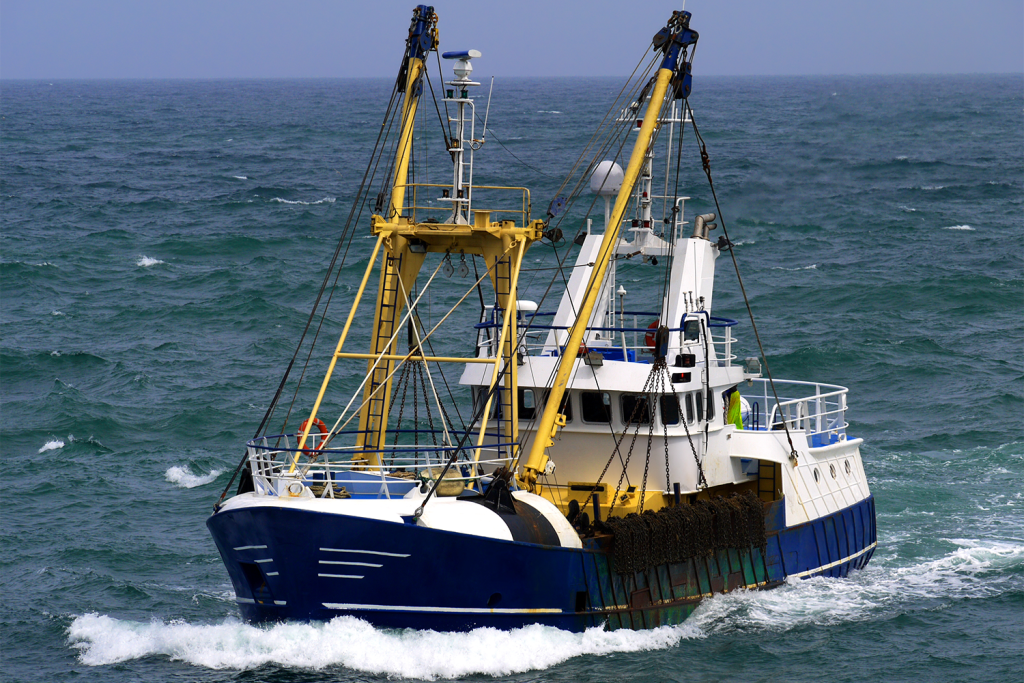
Fisheries
Fisheries in Focus: Busting misconceptions about bottom trawling and its environmental impacts
Fisheries researchers examine all environmental impacts of bottom-trawling and compare the fishing method to other forms of food production.
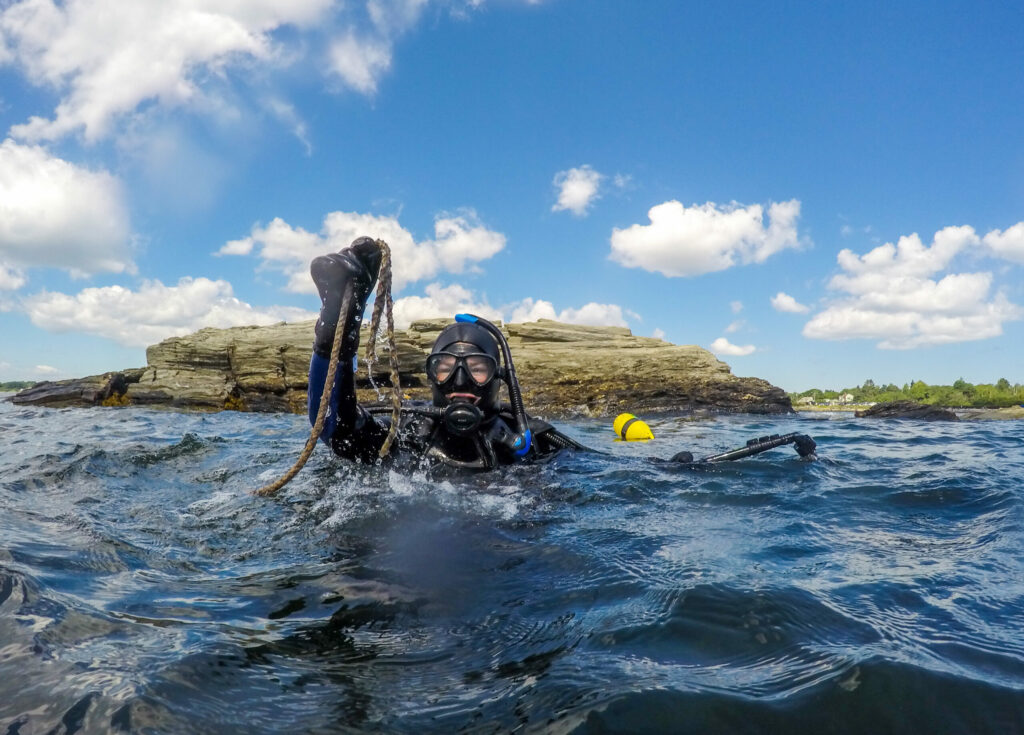
Fisheries
The hidden cost of ghost gear lost by fishing and aquaculture
Abandoned, lost or discarded fishing gear can inflict damage on marine life and the ocean, but what's the economic cost of ghost gear?
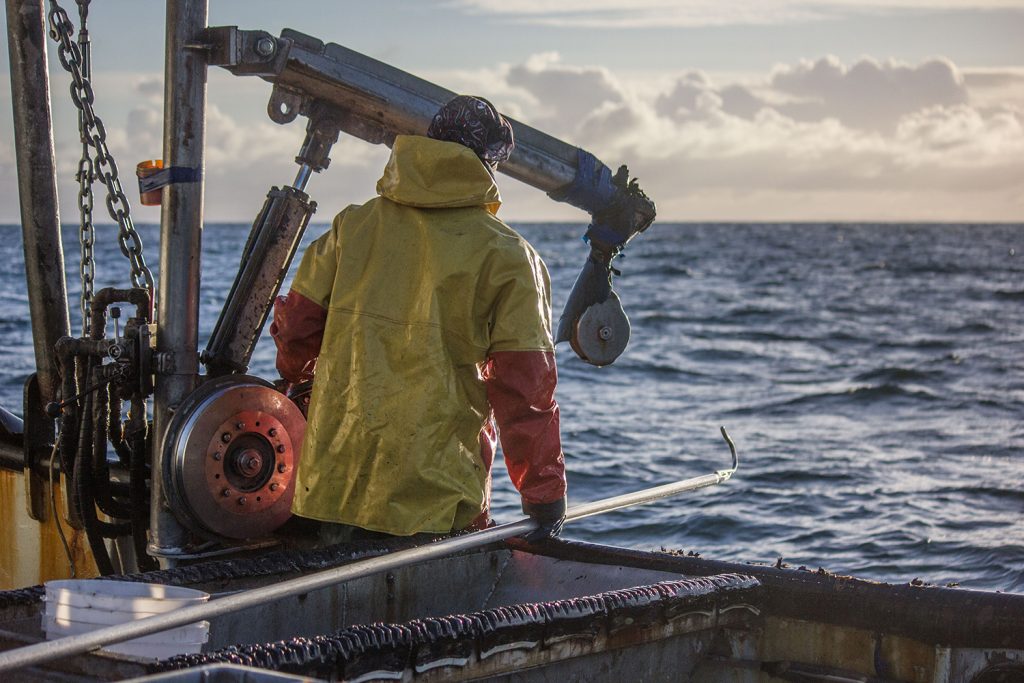
Fisheries
Artificial intelligence is already helping improve fisheries, but the trick is in training the tech
Artificial intelligence is providing valuable data to fisheries, cutting costs and the need for human review. Can the technology be perfected?



